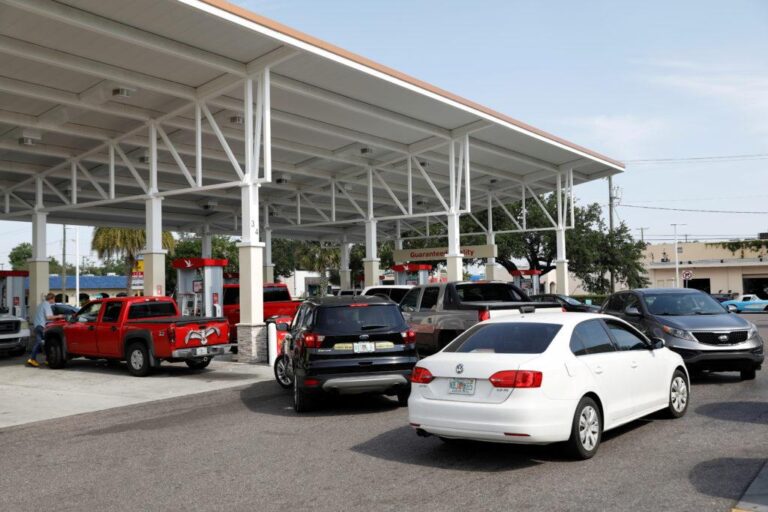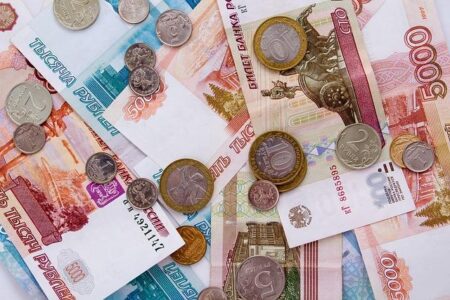Russia is set to resolve its recent gasoline shortages that have driven prices upward, according to a government minister. The supply disruptions, which have sparked concerns across the country and contributed to rising fuel costs, are expected to ease in the near future as authorities take steps to stabilize the market. This development offers a potential reprieve for consumers facing higher expenses at the pump, amid ongoing challenges in the energy sector.
Gasoline Shortages in Russia Drive Prices Up Amid Supply Chain Disruptions
Recent disruptions within Russia’s gasoline supply chain have precipitated a marked increase in fuel prices, sending ripples across both local markets and neighboring regions. These shortages stem primarily from logistical challenges affecting refining capacities, transportation bottlenecks, and tightened export controls. Industry insiders note that the confluence of these factors has strained the availability of gasoline, forcing many consumers to face steeper costs at the pump despite stabilizing crude oil prices globally.
Key factors contributing to the current gasoline supply issues include:
- Reduced throughput at major refineries due to maintenance and sanctions
- Limited access to critical supply routes amid geopolitical tensions
- Increased domestic demand exceeding distribution capabilities
Amid these challenges, government officials have pledged prompt interventions aimed at restoring supply balance. Measures under consideration involve ramping up refinery operations, optimizing transportation networks, and easing export restrictions to alleviate pressure. The transport ministry’s latest assessment projects that with these actions, normal fuel supplies could resume within weeks, thereby stabilizing prices and mitigating economic strain for consumers.
| Supply Disruption | Impact on Gasoline Prices | Expected Resolution Timeline |
|---|---|---|
| Refinery Maintenance | +8% | 3 weeks |
| Transport Bottlenecks | +5% | 2 weeks |
| Export Restrictions | +4% | 4 weeks |
Minister Assures Government Measures Will Stabilize Fuel Availability Soon
Amid rising concerns over fuel scarcity that has pushed gasoline prices upward across Russia, the minister outlined a series of immediate and long-term strategies aimed at restoring market stability. Key actions include ramping up domestic production, increasing imports from neighboring countries, and enhancing logistical support to critical distribution points. Officials are also monitoring supply chains closely to preempt further disruptions and ensure a steady flow of fuel to consumers nationwide.
Measures announced by the government include:
- Boosting refinery output by 15% through temporary operational adjustments
- Negotiating bilateral agreements to secure additional fuel supplies
- Deploying emergency transportation units to reduce delivery delays
- Implementing price controls in affected regions to curb excessive inflation
| Measure | Expected Impact | Timeline |
|---|---|---|
| Increase refinery output | Reduce supply gap | 2-4 weeks |
| Fuel import agreements | Supplement shortages | 1-3 months |
| Emergency logistics | Speed up distribution | Immediate |
| Price controls | Limit price spikes | Ongoing |
Experts Urge Strategic Reserves and Infrastructure Upgrades to Prevent Future Crises
Amid rising concerns over supply chain vulnerabilities, energy experts emphasize the critical need for building robust strategic fuel reserves to buffer against future disruptions. These reserves would act as a vital safeguard during unexpected shortages, providing governments and industries with the flexibility to manage supply fluctuations without triggering price spikes. Analysts warn that reliance on just-in-time delivery models has exposed the system to heightened risk, urging policymakers to adopt a more forward-looking approach that integrates reserve storage alongside regular production.
In addition to reserves, modernizing and expanding infrastructure remains a top priority for long-term stability. Industry specialists recommend comprehensive upgrades to refine storage capacities, transportation networks, and distribution channels to enhance efficiency and resilience. The following table highlights key infrastructure areas identified as most in need of investment:
| Infrastructure Component | Priority Level | Potential Impact |
|---|---|---|
| Fuel Storage Facilities | High | Increased buffer stocks |
| Pipeline Networks | Medium | Reduced transit times |
| Distribution Terminals | High | Improved last-mile delivery |
| Transportation Fleets | Medium | Enhanced logistical flexibility |
Key Takeaways
As Russia moves to address the ongoing gasoline shortages that have recently driven prices upward, officials remain optimistic that the measures underway will stabilize supply in the coming weeks. While challenges persist amid shifting market conditions and geopolitical dynamics, the government’s intervention signals a commitment to restoring normalcy for consumers and businesses alike. Further developments will be closely monitored as the situation evolves.




